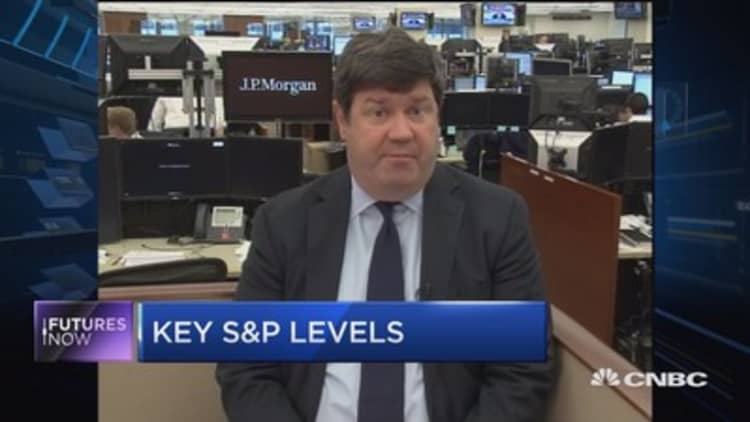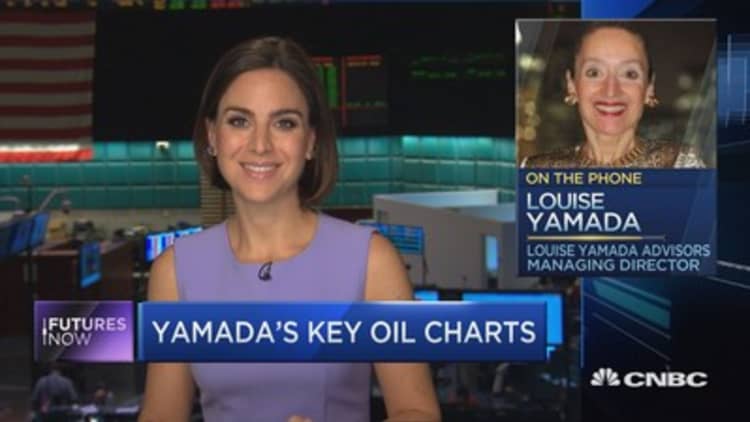


Since pushing above $50 per barrel, crude has taken a bit of a breather. Nevertheless, at least one chartist thinks oil is heading toward fresh highs.
Master technical analyst Louise Yamada says two charts show that crude, still largely trapped in a long-term bear market for more than a year, is targeting new levels around $70.
"The interesting pattern we have in place is the potential reverse head and shoulders bottoming process," explained Yamada on CNBC's "Futures Now" in a recent interview. "Crossing through $50, which we could define as the neckline suggests that the market for oil could go higher."
This notion came as oil markets fell more than 2 percent during Thursday's trading, but eked out a fifth consecutive week of gains.
Yet looking at the charts, the founder of Louise Yamada Technical Research Advisors said that if an investor takes a measured move from the head to the neckline, one could make the projection upward towards $70.
"Interestingly, the left shoulder took about five months and we estimated that, if the right shoulder also took about five months, it should start to move up around October, which is where we are," noted Yamada.
Following the February lows, where crude hit $26 per barrel, the commodity has risen 96 percent—thanks in large part to OPEC's willingness to cut production levels by nearly 700,000 barrels per day. On Sunday, Saudi Arabia stated the cartel was looking for new ways to cooperate with non-OPEC members to stabilize markets.
The fundamental backdrop illustrates why Yamada remains bullish through 2017. However the chart watcher acknowledged there were risks to her thesis in the near term.
"There's a lot of interim resistance. It could take another six months before we even get towards $60. It could go sideways a little bit more and inch its way up over time," she said. "With all the supply stories, one has reason to be skeptical."
One of those reasons has to do with Russia. Igor Sechin, who serves as CEO of Russia's state-run oil producer Rosneft, expressed a desire to potentially increase oil production substantially.
The comments came during a conference in Italy and were interpreted by many as a dig at OPEC, of which Russia is not a member. Additionally, the U.S. oil rig count rose by 11 to 443 on Friday, marking the 17th straight week without a cut.
Yamada went on to say that, in the event that these developments help drive oil back down towards $42, the bottoming process would be curtailed.
Still, she remained relatively optimistic that the sideways movement will eventually break upward.
"The weekly momentum actually put in a positive divergence on the 2009 low at $26," explained Yamada regarding oil prices during the past decade. "It's been fluctuating between turning positive and turning negative. Right now it's got another little positive turn, which perhaps suggest some more consolidation."
The trend has been building for years, she added.
"Going back to 1986, you can see the bottoms. Once the price gets near or through the lower second standard deviation, it's usually a turnaround," Yamada added.
"There's quite an impressive turnaround in this chart that has taken place for crude."



